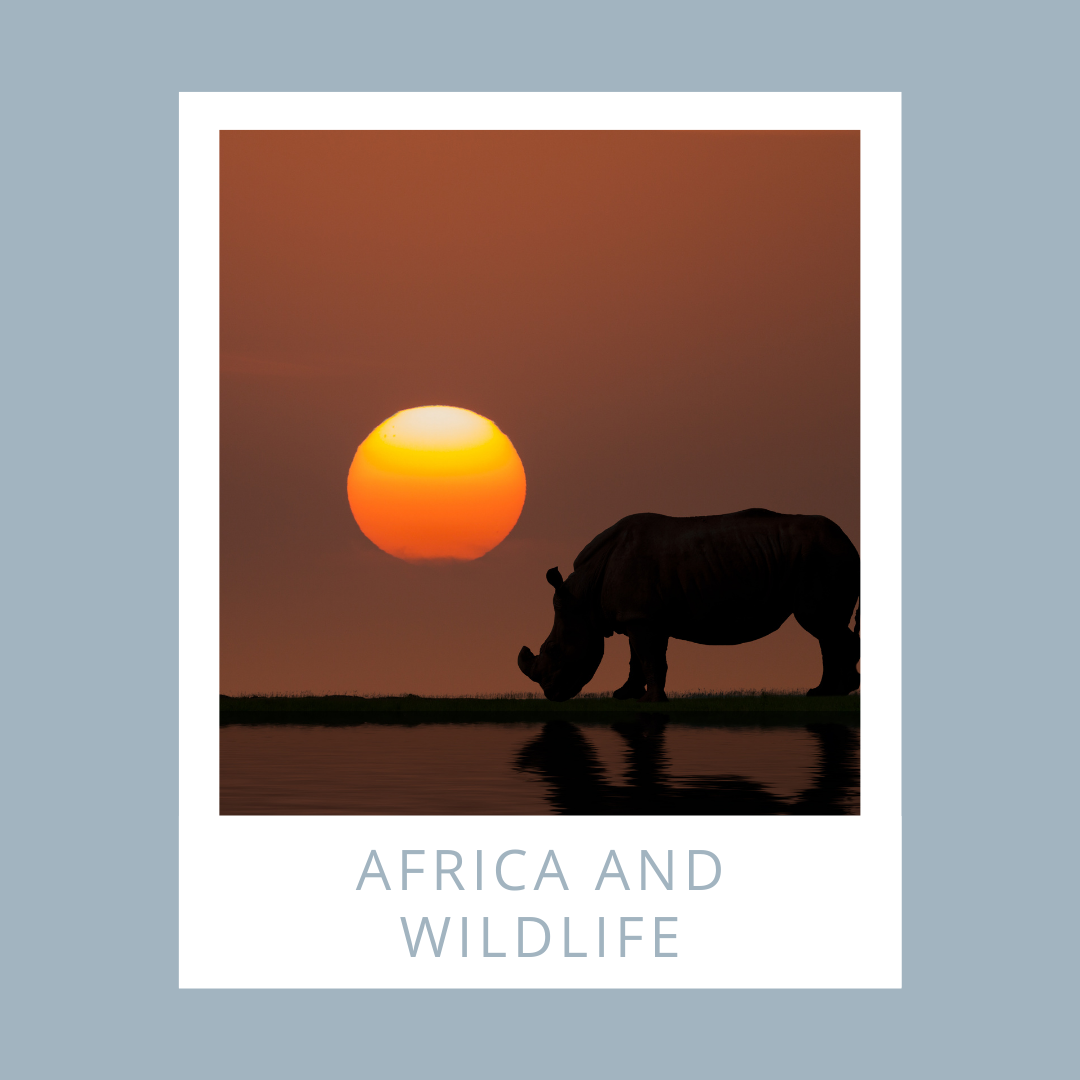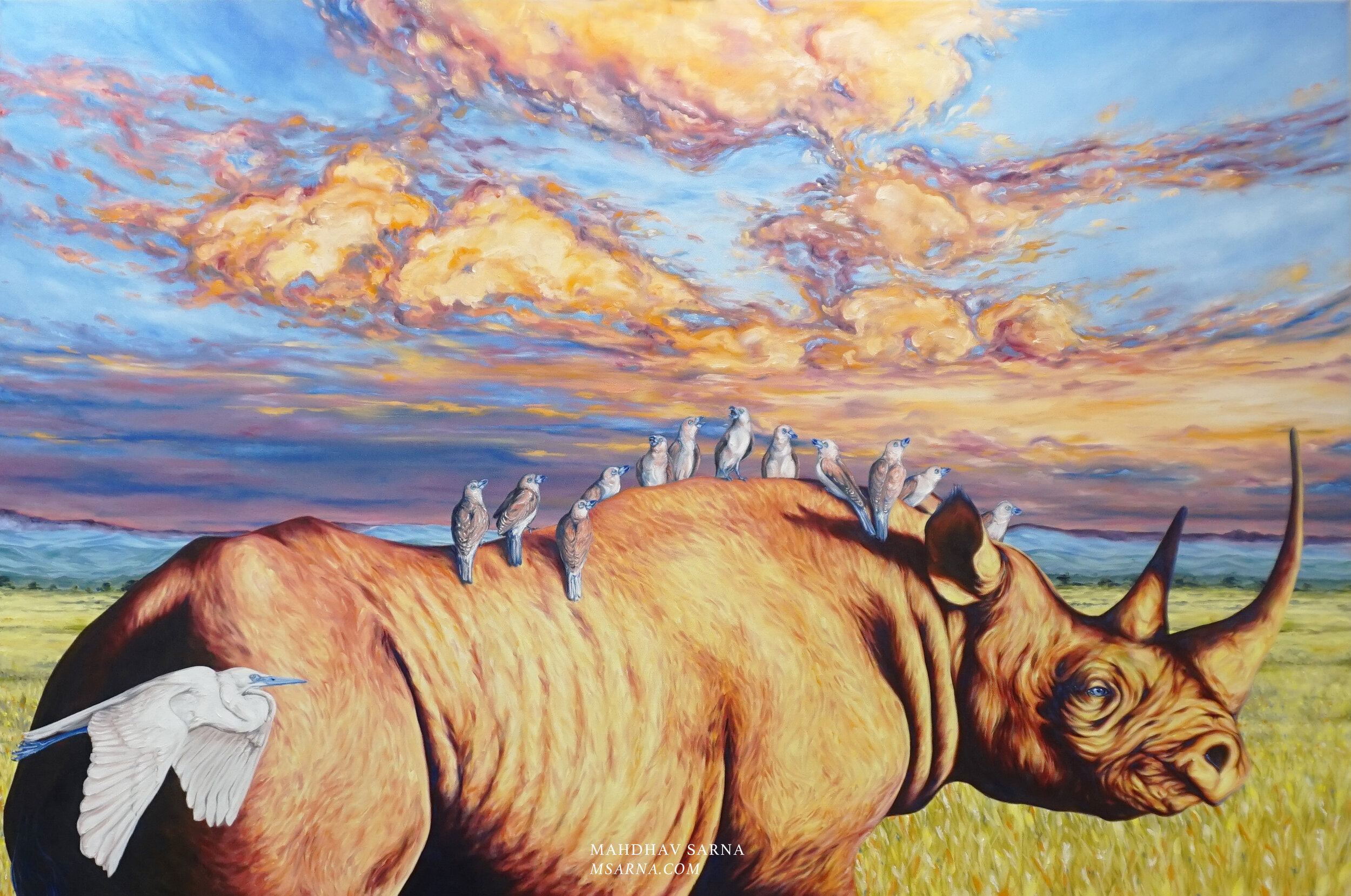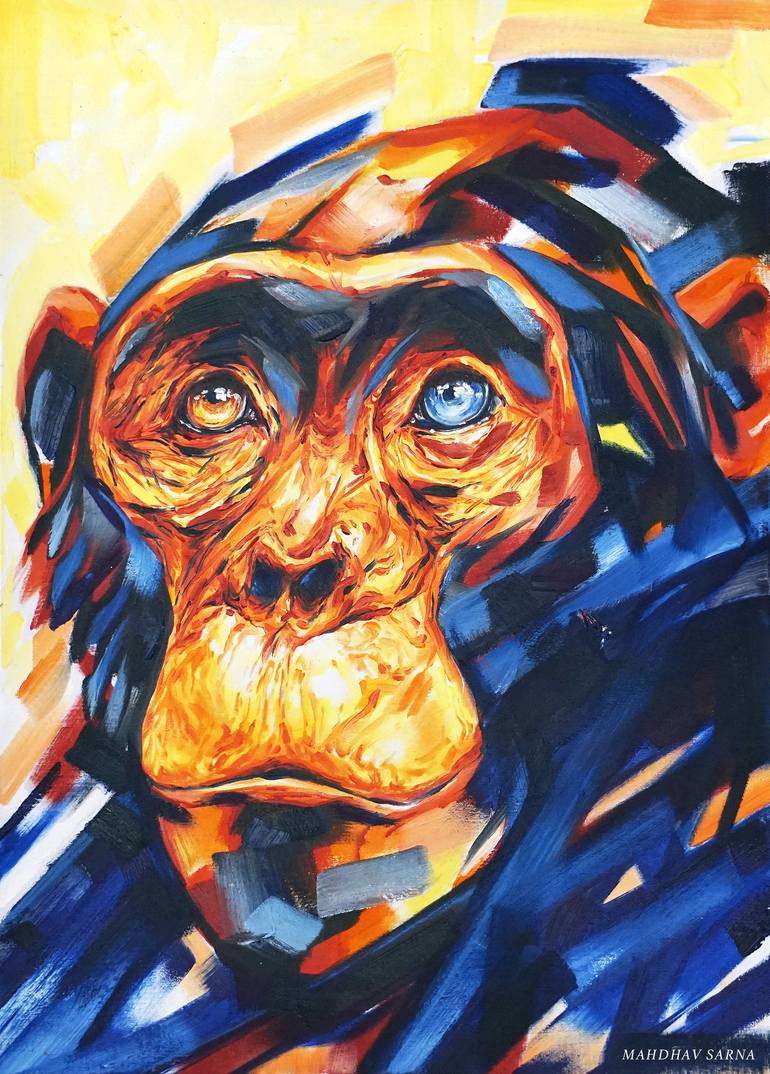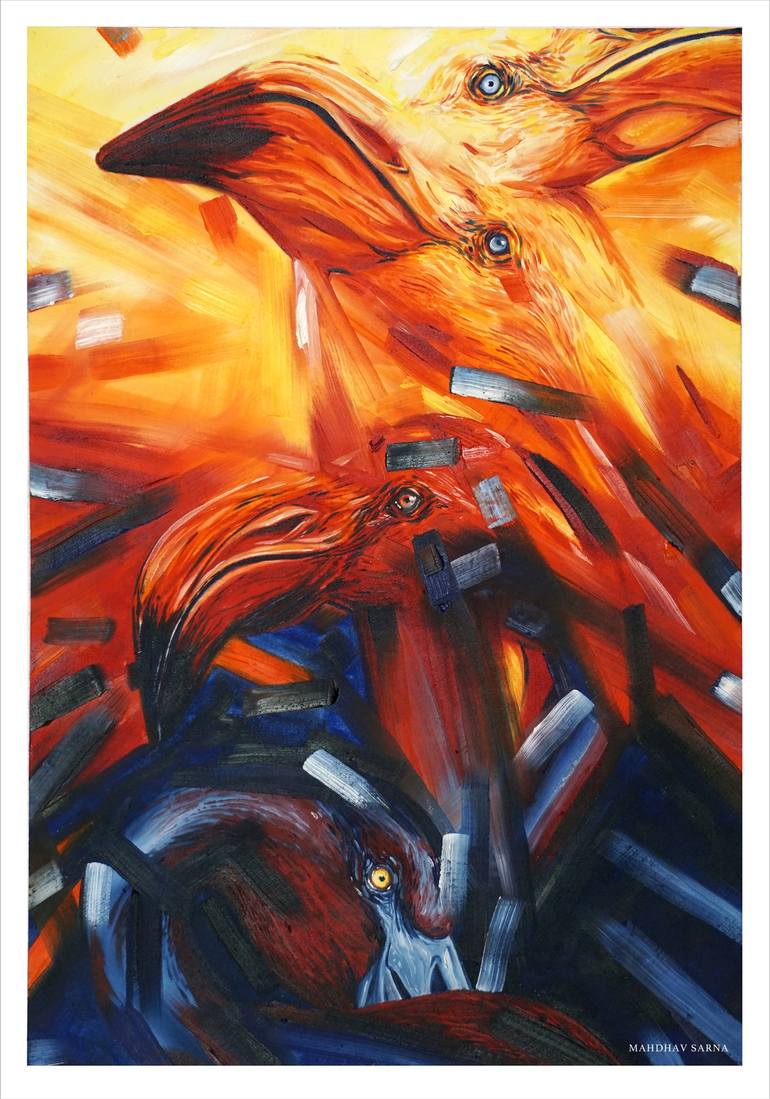
Africa and wildlife
Share
The diverse regions of the African continent, from ancient deserts to pristine swamps and from rolling savannah to mist-shrouded mountains, provide for a vast array of wildlife.

Ernest Hemingway wrote: 'There can be no greater sight than that of a full-maned lion on the plains of Africa', and this is indeed a magnificent image, but Africa has far more than these scenes occurring daily. Renowned for its unrivalled imagery and drama the African wildlife and wilderness will never fail to inspire those who embrace it.

The Cheetah

There are five subspecies of this big cat. It is slim and has muscular, long legs — in relation to its body size when compared to other cats — a small rounded head that is set on a long neck, a flexible spine, a deep chest, special pads on its feet for traction, and a long tail for balance.
As the Sun Sets on Savuti Marsh by artist Steve Farrimond
Cheetahs tend to be introverted. This cat is a solitary animal. Males have been seen living in coalitions, where they appear extremely tolerant of close proximity to other males. They never stay in one place for long and are referred to as nomads.
The Cheetah by artist Mahdhav Sarna
Cheetahs can run fast, but they are timid predators. They usually prey on small antelopes such as Thomson’s gazelles and impalas but also hunt small mammals and birds. It gets as close to the prey as possible; then in a burst of speed, it tries to outrun its quarry. These big cats are the fastest of all land mammals. The majority of hunts result in failure.
The Rhinoceros

Rhinos may look like prehistoric creatures, and they do date back millions of years to the Miocene era, but they are also mammals like us. There are two species of African rhinos, the white rhino and black rhino, and each is distinct in its own way. The white, rhino derives its name from the Dutch word “weit,” meaning wide. It is actually grey in colour and has a hump on its neck and a long face. The black rhino has a thick, hairless grey hide. Both rhinos have two horns.
The Black Rhino by artist Mahdhav Sarna
Some rhinos are more introverted than others. Rhinos live in home ranges that can sometimes overlap with each other, and their feeding grounds, wallows, and water holes may be shared. The black rhino is usually solitary, while the white rhino tends to be more social.
They can’t see very well: Rhinos have poor eyesight, which may explain why they will sometimes charge for no reason. However, their sense of smell and hearing are very good.
Rhinos tend to live where they like to eat: The black rhino is a browser. It is used to eat a large variety of vegetation—including leaves; buds; and shoots of plants, bushes, and trees. It can be found in various habitats that have dense, woody vegetation.
White rhinos mainly live in South Africa, but they have also been reintroduced to Botswana, Namibia, Swaziland, and Zimbabwe. The majority of the black rhino population—98%—is concentrated in four countries: South Africa, Namibia, Zimbabwe, and Kenya.
The Chimpanzee
There are four subpopulations of the chimpanzee — the western chimp, the Nigeria-Cameroon chimp, the central chimp, and the eastern chimp. This great ape is one of our closest relatives, sharing about 98 percent of their genes with us. Much of their body is covered with long black hair, but the face, ears, fingers, and toes are bare.
Content Amidst The Foliage by artist Mahdhav Sarna
The chimpanzee is the mammal most like a human: They are intelligent, curious, noisy, and social. Chimps live in loose communities which can number anywhere from ten to more than 100 individuals. They can share a home range that they protect from intruders and will sometimes forage for foods in groups.
They enjoy spending time together: Chimps touch each other a great deal and may kiss when they meet. They also hold hands and groom each other. An adult often has a special companion with which it spends a lot of time.
They can use tools: chimps have opposable thumbs and a firm grip. This allows them to pick up objects and use “tools” for certain purposes.
In A Moment of Heavenly Connection by artist Mahdhav Sarna
Chimps are not picky eaters: after descending from their night nests in the trees, they hungrily feed on fruits, their principal diet, and on leaves, buds, and blossoms. After a while, their feeding becomes more selective, and they will choose the ripest fruit. They usually pick fruit with their hands, but they eat berries and seeds directly off the stem with their lips.
Chimps have the widest geographic distribution of any great ape, with a range of more than 2.6 million kilometres. They can be found discontinuously from southern Senegal across the forested belt north of the Congo River to western Uganda and western Tanzania.
The Flamingo

Flamingos are famous for their bright pink feathers, stilt-like legs, and S-shaped neck.
These famous pink birds can be found in warm, watery regions on many continents. They favour environments like estuaries and saline or alkaline lakes. Considering their appearance, flamingos are surprisingly fluid swimmers but really thrive on the extensive mudflats where they breed and feed.
Greater flamingos are likely to be the only tall, pink bird in any given locale. They also have long, lean, curved necks and black-tipped bills with a distinctive downward bend.
Rising, Like The Sun From Slumber by artist Mahdhav Sarna
Their bent bills allow them to feed on small organisms—plankton, tiny fish, and fly larvae. In muddy flats or shallow water, they use their long legs and webbed feet to stir up the bottom.
Greater flamingos live and feed in groups called flocks or colonies. They find safety in numbers, which helps to protect individual birds from predators while their heads are down in the mud. Greater flamingos also breed while gathered in groups. Once mating is complete, a pair takes turns incubating their single egg. Young flamingos are born grey and white and do not turn pink for two years.
The Kingfisher

These shy, yet glamorous, birds can be found around rivers, coasts and forests, and indicate a healthy ecosystem. Kingfishers are one of the most brilliantly coloured birds, and many have strident voices and dramatic courtship displays. Most species have some blue plumage, and many have red bills. Some have adapted well to man's alteration of natural habitats.
Despite their name, not all kingfishers feed on fish - many are carnivorous (feeding on vertebrates such as reptiles, rodents and birds) or insectivorous (feeding on insects and other invertebrates), and some rarely come near water.
The Kingfisher by artist Mahdhav Sarna
Kingfishers perch in an upright stance, are large-headed, short-necked and have long, stout bills. They belong to the order Coraciiformes and are related to bee-eaters and rollers. In-flight, kingfishers are speedy and direct, rarely flying above tree level. When hunting for fish, the Kingfisher plunge headfirst towards the water and return to a perch to kill and eat their prey. Kingfishers normally sleep in some kind of tunnel or hole.
There are 86 kingfisher species throughout the world. Africa has 18 species, ten of which occur in Southern and East Africa.
The Meerkat

These gregarious animals are often seen in groups, and several families may live together in a large community.
Squirrel-sized meerkats are mongooses famed for their upright posture. They often stand on their rear legs and gaze alertly over the southern African plains where they live. Mothers can even nurse their young while standing.
Which animal do you prefer?
Be the First To Hear About Our Upcoming Exhibitions
THE SPACE gallery is a contemporary art gallery and workshop in Rosebery. We enjoy sharing local and international artists with the community and would love to see you at our next exhibition. Sign up for our newsletter or get in touch to find out more about our upcoming art shows in Sydney.
Reference: AWF.org - Krugerpark
Credit photos: Canva














